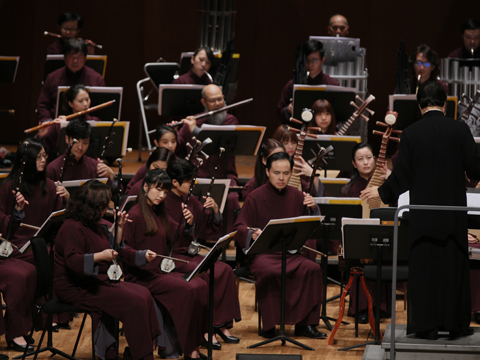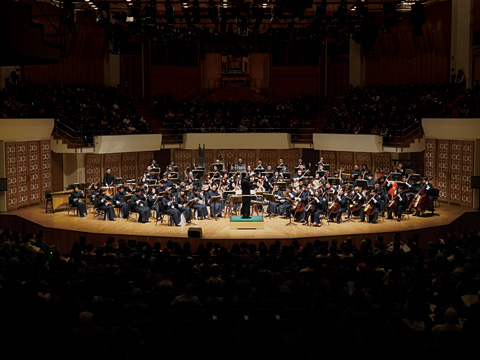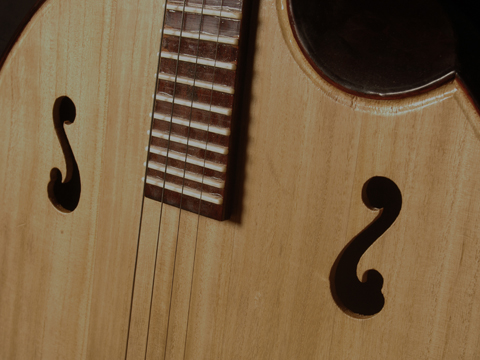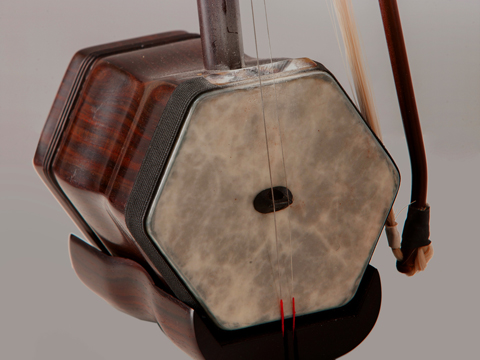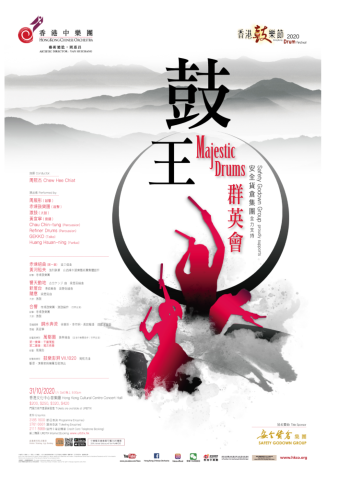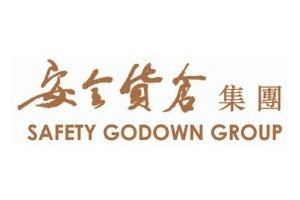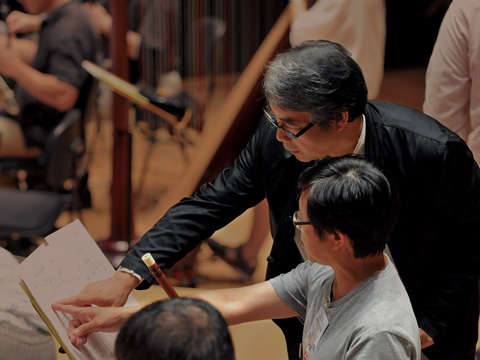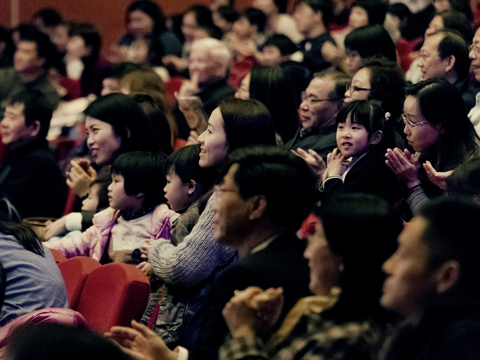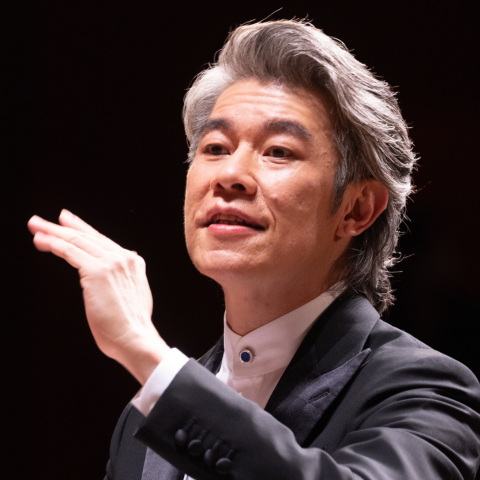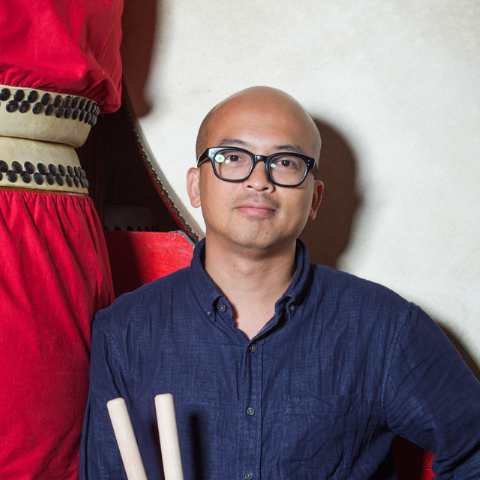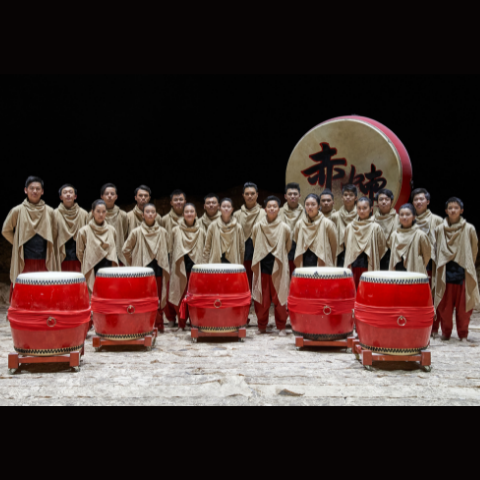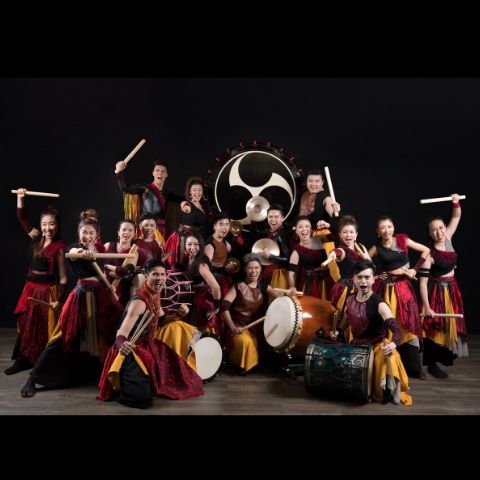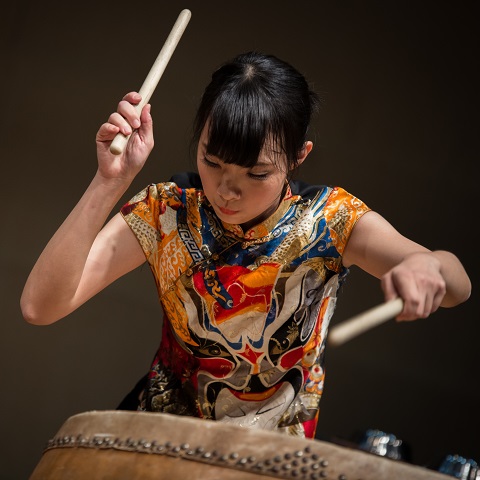Drumming for Inclusion and Cross-over Assimilation
Chow Fan-fu
The Hong Kong Drum Festival, first launched in 2003 during the SARS epidemic to cheer up the Hong Kong public with the vibrant sounds of drums, has evolved into one of the highly anticipated annual gala events organized by the Hong Kong Chinese Orchestra. This year, the Festival’s ancillary concert, ‘Majestic Drums’, is imbued with special meaning against the backdrop of the Covid-19 pandemic.
The universality of the drum
The drum is deemed the oldest musical instrument of mankind. According to archaeological data, the drum as a musical instrument already existed in the Fertile Crescent in Mesopotamia in as far back as 6,000 BCE. It is also common knowledge that the drum exists in nearly every ethnic group all over the world in inestimably myriad forms and kinds. It can also be said that the drum is a universal element, a medium that spans regions and borders, cultures and art forms. As an art, it is inclusive and assimilating.
As a percussion instrument, the drum used to be a means for tribal communication, a signal giver for troops, and a morale booster in battle. In many traditional cultures in the world, the drum symbolizes sovereign power and is often used in religious rituals. In modern times, it is also used in music therapy. These many functions of the drum aptly show its special musical quality of being inclusive, cross-over and assimilating. The nine pieces in this concert, whether old or new, possess all these qualities while maintaining their own characteristics.
The first half of the concert features six pieces by Refiners Drums and taiko drum ensemble GEKKO, all of which embody a certain degree of fusion of different cultural elements. Refiners Drum emphasizes more the East-West mix and traditional Chinese culture of Hong Kong, while GEKKO features Japanese drum culture. The performance of both troupes exhibits forms that combine cross-over dramatic physical movements that invigorate the audience with their verve and positive dynamism. Resonation, a world premiere and a collaboration between the two troupes, highlights even more the inclusive, cross-over and assimilative qualities of modern drum music.
Integrate and interact for a climactic performance
As a full-size Chinese ensemble, the Hong Kong Chinese Orchestra has all through the years worked with various drum troupes from around the world in the annual Drum Festival – an aspect that highlights all the more the assimilative abilities of drums in their varied forms. In the second half of the concert, As the Molten Steel Runs features a yunluo solo where the attention of the audience may be directed to how the drums can exercise their take on an orchestra. Mountainscapes, a world premiere by Hong Kong composer Alfred Wong commissioned by the HKCO with Chinese ink landscape painting as it theme, shows how a fusion of Chinse percussion instruments including the drum and Western percussion instruments can merge with a full-scale Chinese orchestra in a cross-over to express the kind of music that appeals to the modern audience.
The finale of the annual Hong Kong Drum Festival over the years has been Chew Hee Chiat’s Let the Thunder of Drums Roll series for drum and orchestra. Now into version VII. 1020, it illustrates once again the all-embracing nature of drum music and the chemistry between different kinds of drums with a full-scale orchestra. The work uses musical elements of South China to sculpt the metropolitan image of Hong Kong. In an interactive performance, guest drummers from all over the world will join in, fusing different cultures and musical genres and bringing the annual drum festival to an intense, dynamic climax in anticipation of the next festival in 2021.
For such intense energy to be produced, it takes the inclusion of different cultures and the assimilation of different genres. This year as Hong Kong and the world in general are facing hardships brought on by Covid-19, the programme of ‘Majestic Drums’ hits a high note with the collaborative spirit. I hope while the audience enjoy the passionate and dynamic rhythms of the music, they would also appreciate the ‘softer’ musical sections which embody the spirit of tolerance and compassion.

